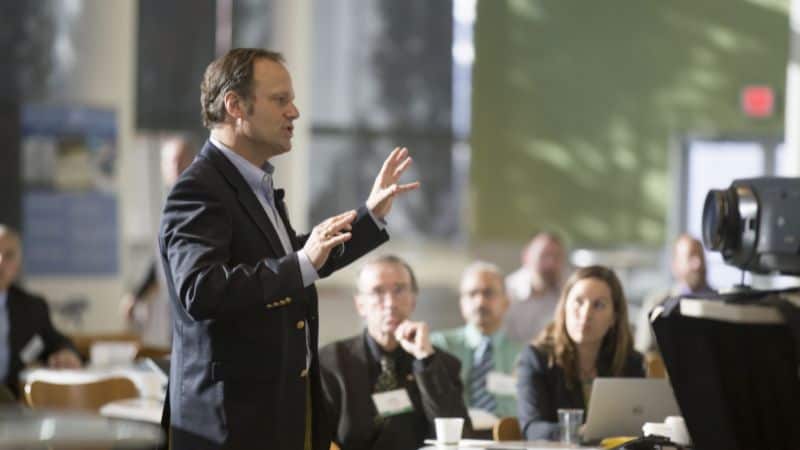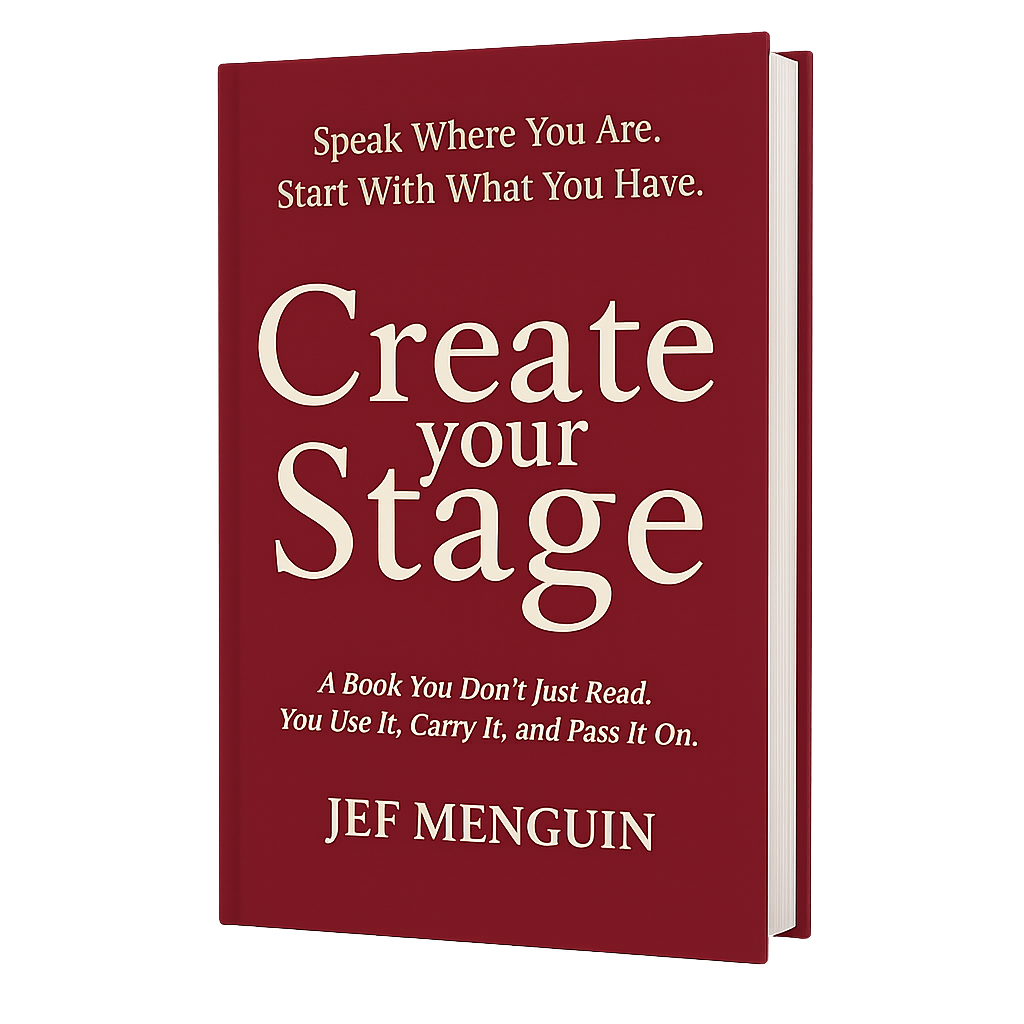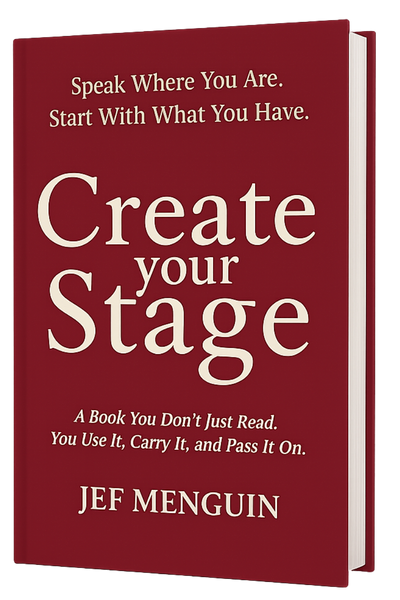When I first ventured into the world of professional speaking, I felt like a little fish in a big pond. Over time, and hundreds of speeches later, I’ve picked up a trick or two to calm those butterflies and truly connect with my audience.
You see, I’ve always believed in warming up before any big performance. Just like athletes stretch before a race, we speakers need to ‘steam up’ for the task ahead.
But what’s my secret sauce? Well, it’s a blend of my personal rituals mixed with nuggets of wisdom from fellow speakers.
Imagine we’re just having a casual coffee chat, and I’m about to share some backstage secrets on how to really gear up for that standing ovation.
Ready? Let’s dive in!
Physical Preparation
Think of public speaking as a performance. You wouldn’t expect a dancer to leap on stage without stretching or a singer to belt out tunes without warming up their vocal cords, right?
Similarly, our physical prep before a speech is absolutely vital. It’s not just about looking the part but feeling invincible, energized, and completely in control. Let’s walk through some of the key elements:
Vocal Warm-Ups
Vocal warm-ups are exercises specifically designed to prep your voice. They help in loosening the vocal cords and ensure a clearer and more modulated speech.
Science shows that our vocal cords, just like any muscle, can strain if not properly warmed up. These exercises increase blood flow, allowing for flexibility and preventing vocal injuries. A clearer voice not only carries better but also exudes confidence.
Try humming at different pitches or practicing tongue twisters. Reading aloud slowly and then gradually increasing the speed is another excellent method.
Celebrities like Oprah Winfrey emphasize the importance of vocal exercises. Before her shows or interviews, she often does some vocal runs to ensure her voice is ready to engage her audience.
Posture and Breathing Exercises
This is all about standing tall and practicing deep breathing. It’s a combo move – you look confident and have a better control over your breath, which helps in pacing your speech.
Standing tall opens up the diaphragm, allowing for deeper breaths. Deeper breaths increase oxygen supply to the brain, which can help in clearer thinking and calmness.
Before going on stage, stand against a wall ensuring your head, shoulders, and heels touch the wall. Feel that alignment and try to maintain it. Pair this with deep breathing exercises: inhale for four counts, hold for four, and exhale for four.
Steve Jobs, the legendary co-founder of Apple, was known to practice posture and breathing routines before his iconic presentations. It wasn’t just about looking confident but genuinely feeling it from within.
Dress for Success
It’s the simple act of choosing the right attire that makes you feel both comfortable and confident.
Clothing can impact our psychology. When we feel we’re dressed appropriately, it boosts our confidence and reduces anxiety.
Always plan your outfit in advance. Try it on a day before, and ensure it’s not just fitting right but also resonates with the message you’re about to deliver.
Michelle Obama, during her time as the First Lady, always chose outfits that were not just stylish but also comfortable for her speeches. She believed in the power of dressing to impress, but also in the importance of comfort to stay genuine and authentic.
Remember, the way you prepare physically can set the tone for your entire performance. Think of it as laying a solid foundation for a house – it’s what ensures everything else stands tall and strong.
Emotional Preparation
We’ve all been there—butterflies in the stomach, a sudden bout of self-doubt, or that fleeting moment of panic. While physical prep gets us stage-ready, emotional prep is what ensures we truly connect with our audience.
It’s all about tapping into that inner strength and positivity. Let’s break it down:
Visualization
Visualization is the art of creating a mental image or scenario. For speakers, it means picturing a successful speech delivery, imagining an engaged audience, or even foreseeing a standing ovation.
Neuroscience reveals that the brain can’t distinguish between a vividly imagined event and a real one. By visualizing success, we’re training our brain to expect it, boosting our confidence in the process.
Find a quiet corner before your speech. Close your eyes and vividly imagine every detail of your upcoming performance, from the attentive faces in the crowd to the applause at the end.
Top athletes, like Michael Phelps, swear by visualization techniques. Phelps would mentally rehearse every single swim, imagining the water, his strokes, and even his triumphs. If it works for Olympic champions, it surely can work for us!
Affirmations
Affirmations are positive statements you say to yourself, focusing on positive outcomes. Think of them as pep talks you give yourself.
Repeated affirmations rewire our brain, reducing self-doubt and elevating self-belief. They act as a counter to our internal negative chatter.
Jot down a few positive statements about your performance. Examples include “I am confident and my message is valuable” or “I connect effortlessly with my audience.” Repeat these to yourself, preferably aloud, before you step on stage.
Famous motivational speaker Louise Hay was a strong advocate of affirmations. She believed and proved that affirming positive beliefs about oneself can bring about significant positive changes in one’s life.
Connect with Your Why
It’s about revisiting the core reason you’re giving your speech. It could be to inspire, educate, entertain, or raise awareness.
Connecting with your purpose elicits deeper emotional responses, making your delivery more genuine and passionate. It anchors you, especially if nerves start creeping in.
Take a moment to reflect on the core message or impact you want to achieve with your speech. Feel the weight of its importance and let that drive you.
Simon Sinek, author of “Start With Why,” emphasizes that individuals and organizations are more successful when they focus on their ‘Why.’ He himself starts every presentation and workshop reconnecting with his mission to inspire people.
Emotions can be tricky, but with the right strategies, they become powerful allies. When we’re emotionally aligned with our purpose and brimming with positivity, we’re not just speakers; we’re storytellers, influencers, and true connectors.
Mental Preparation
Alright, let’s tackle another integral aspect of gearing up for that speech – the mind. We’ve got our body set, and our emotions in check, but without the right mental mindset, everything can go awry.
Picture this: the mind as the director, ensuring every part of you plays its role perfectly. Let’s dive into how you can prime your mind for the big moment:
Revisit Your Notes
This is the act of skimming through your main points, ensuring you’re familiar with the flow and content.
Familiarity breeds confidence. Knowing your content inside out reduces the risk of forgetfulness or getting sidetracked.
Spare a few minutes right before your talk to quickly glance through your key points. It’s not about memorizing, but refreshing.
Sir Winston Churchill, one of history’s greatest orators, would often revise his notes, even if he had delivered the same speech multiple times. This ensured he was always in command of his content.
Mind Mapping
Creating a visual representation or ‘map’ of your speech. It’s a diagram that represents ideas, words, or tasks linked around a central idea.
Our brain often processes visual information more effectively than written lists. Mind maps can aid in better recall and structured delivery.
Draw your central idea in the middle of a paper. Branch out with main points and further sub-points. Review this map to get a bird’s eye view of your speech.
Tony Buzan, the proponent of mind mapping, claims this method not only aids in memory but also sparks creativity. Many professionals use this tool to structure their presentations.
Mindfulness and Meditation
Being present in the moment and calming the mind. It’s a practice where you focus on your current state, dismissing any distractions.
It reduces anxiety, clears mental clutter, and improves focus. A calm mind is more receptive and adaptive, especially in front of an audience.
Find a quiet space. Sit comfortably, close your eyes, and focus on your breathing. Try to dismiss any wandering thoughts, bringing your focus back to the present.
Tech mogul and philanthropist Bill Gates has spoken about his practice of meditation. He believes it helps him gain clarity and reduces the noise in his head.
Harnessing the power of your mind is like fine-tuning an instrument. When done right, it can transform a good performance into an unforgettable one. Remember, it’s as much about knowing your material as it is about trusting your capability to deliver it flawlessly.
Spiritual Preparation
Venturing into the spiritual realm might seem a bit abstract, especially in the context of public speaking.
However, this is where the heart meets the soul, enabling us to speak not just to ears, but to hearts.
It’s all about feeling connected, both to yourself and your audience. Let’s explore the depths of spiritual preparation:
Intention Setting
It’s the act of consciously setting a purpose or goal for your speech, beyond the words and slides.
Having a clear intention adds depth to your delivery. It acts as a guiding light, ensuring that every word and gesture aligns with your core message.
Before stepping onto the stage, take a moment to ask yourself, “What is my deepest wish for this audience after they hear my words?” This becomes your guiding intention.
Oprah Winfrey often starts her endeavors with intention setting. She believes that having clear intentions is a cornerstone for meaningful impact.
Grounding Exercises
Techniques that help you feel connected and anchored to the present moment, often through a physical or mental connection to the earth or your surroundings.
Feeling grounded reduces nervous energy, allowing you to be present and centered, ensuring a more authentic delivery.
A simple grounding exercise is to stand firmly, feeling your feet’s connection to the floor. Imagine roots extending from your feet, anchoring you deeply into the earth. Take deep breaths, feeling this connection.
Many yoga practitioners, including renowned teacher Deepak Chopra, use grounding exercises to feel connected and present before addressing large groups.
Prayer or Personal Ritual
A personal spiritual practice, which can be a prayer, mantra, or ritual, that you perform to seek blessings, strength, or clarity.
Such practices can provide comfort, strength, and a sense of being supported by a higher power or the universe.
Depending on your beliefs, take a few moments to say a prayer, repeat a personal mantra, or perform a small ritual that resonates with you.
Dr. Martin Luther King Jr., before his iconic speeches, would often pray, seeking guidance and strength. His spiritual connection added depth and passion to his words.
Tapping into the spiritual realm isn’t about religion or dogma; it’s about connection. When you feel connected to a higher purpose, your words carry a weight and sincerity that resonates deeply, leaving an indelible mark on those who listen.
Intellectual Preparation
The journey of a public speaker isn’t just about delivering words—it’s about imparting wisdom, sharing insights, and provoking thought. It demands a sharp, cultivated intellect.
Preparing intellectually ensures that your content is not only informative but also compelling. Let’s unravel the layers of intellectual preparation:
Continuous Learning
It is an ongoing commitment to updating your knowledge, skills, and expertise.
Continuous learning keeps you relevant. It ensures that your content is fresh, updated, and reflects the latest trends or discoveries in your field.
Dedicate some time each week to read articles, watch webinars, attend workshops, or even just converse with experts in your field.
Bill Gates, known for his voracious reading habit, reads about 50 books a year. His commitment to continuous learning has been instrumental in his success and visionary outlook.
Critical Thinking
It is the ability to think clearly and rationally, and understanding the logical connection between ideas.
Critical thinking allows you to present arguments coherently, counter opposing views gracefully, and ensure that your content is logically structured.
Practice questioning assumptions, analyzing arguments, and debating topics. Engage in discussions that challenge your views.
Steve Jobs, co-founder of Apple, often emphasized the importance of critical thinking. He believed that true innovation arises from questioning the status quo and thinking differently.
Feedback and Iteration
Seeking feedback on your speeches and presentations and then refining them based on this feedback works.
Feedback provides an external perspective, helping you identify areas of improvement. Iterating based on feedback ensures continuous enhancement in your delivery and content.
After delivering a speech, seek feedback from trusted colleagues or mentors. Be open to criticism and use it constructively to refine your future presentations.
TED speakers often go through multiple iterations of their talks, receiving feedback from various experts before the final delivery. This rigorous process ensures their talks are impactful and well-received.
Intellectual preparation is about cultivating a mind that doesn’t just inform but also inspires. When you invest in your intellect, your audience doesn’t just hear you; they resonate with your ideas, are challenged by your thoughts, and are inspired by your insights.
Masterful Speaking
Stepping onto the stage is not just about the minutes or hours under the spotlight; it’s the culmination of days, weeks, or even years of holistic preparation.
It’s an orchestra of the physical, emotional, mental, spiritual, and intellectual facets coming together in harmony.
From the resonance in your voice, fueled by physical warm-ups, to the genuine connection you establish, rooted in emotional and spiritual grounding; from the sharpness of your intellect that captivates minds, to the mental agility that keeps you composed—it’s all part of the beautiful tapestry of public speaking.
It’s worth noting that everyone’s preparation journey will be unique. Some might find solace in spiritual practices, while others lean heavily on intellectual pursuits.
And that’s okay.
The essence is to recognize these dimensions and craft a pre-performance routine that caters to each one, aligning them with your personal style and goals.
Remember, public speaking isn’t just about delivering words—it’s about delivering a part of yourself.
When you prepare holistically, you gift your audience with a performance that’s authentic, memorable, and impactful. So, steam up, warm those engines, and shine in your truest light!






